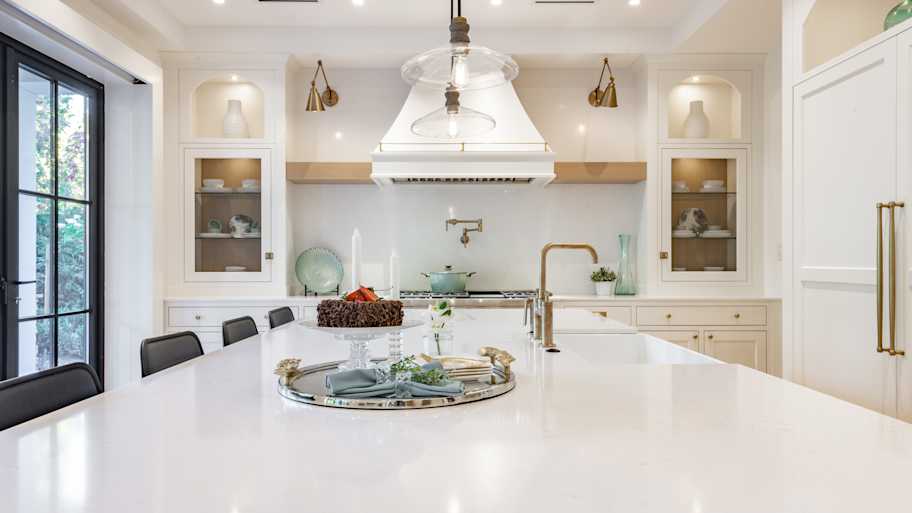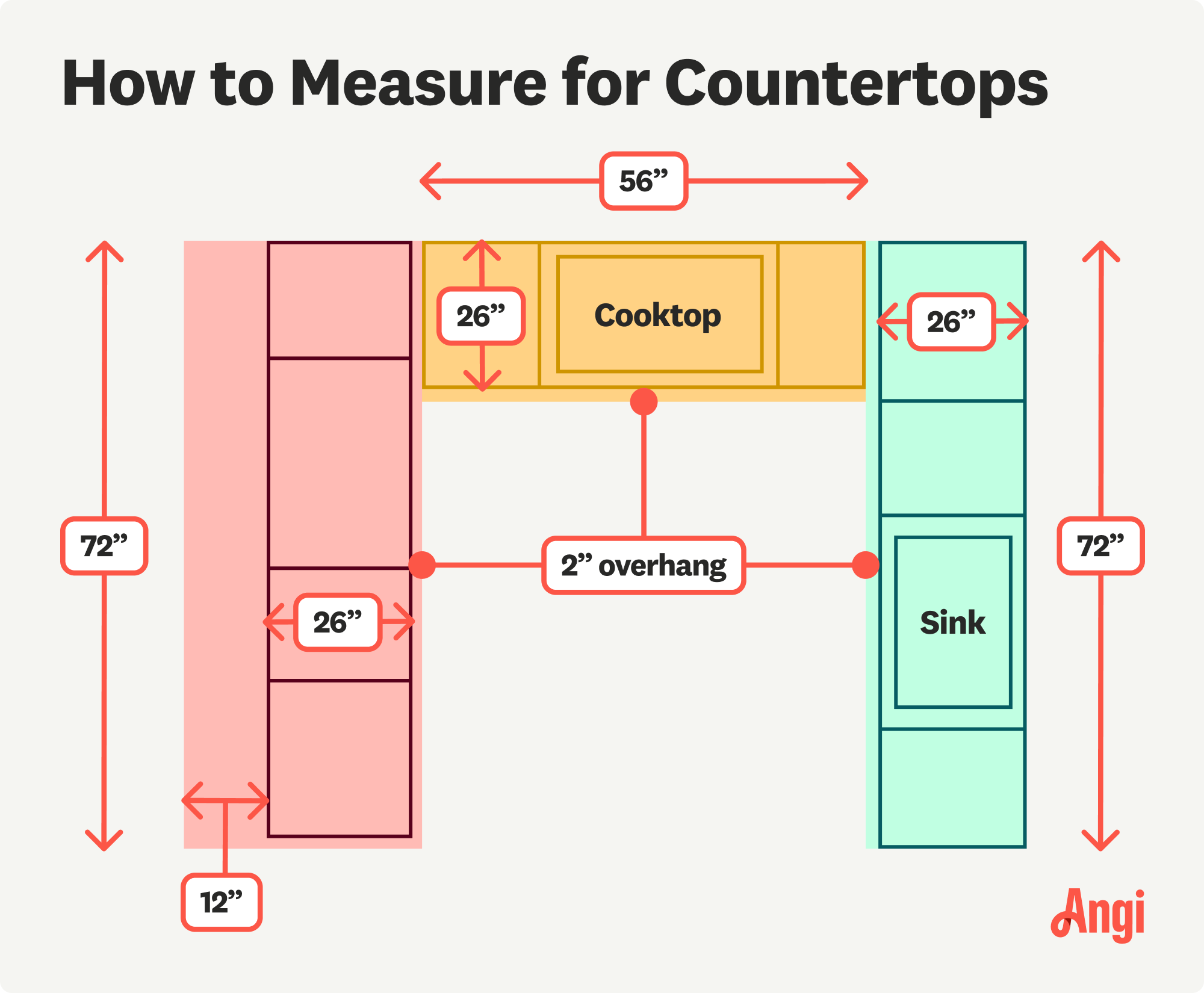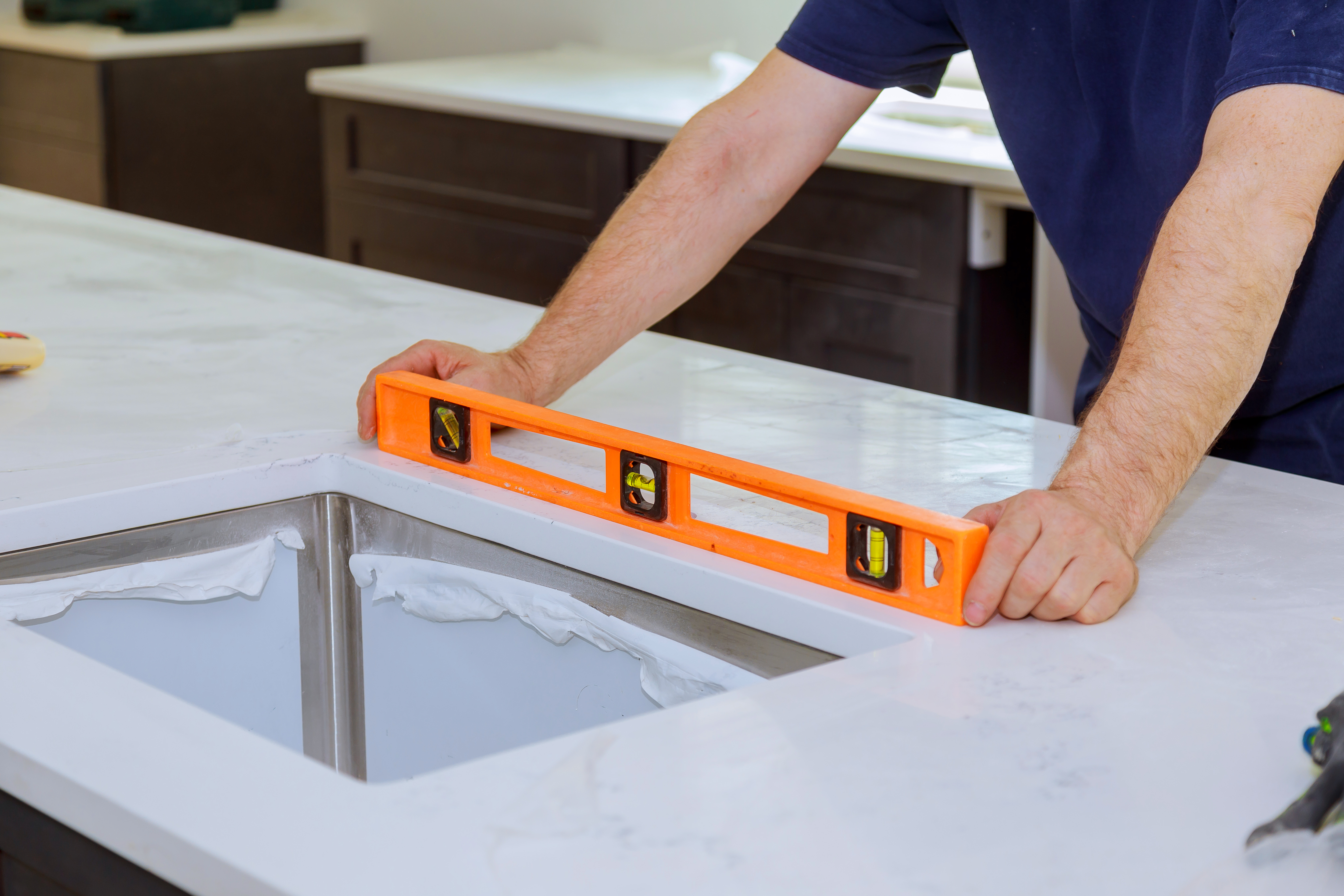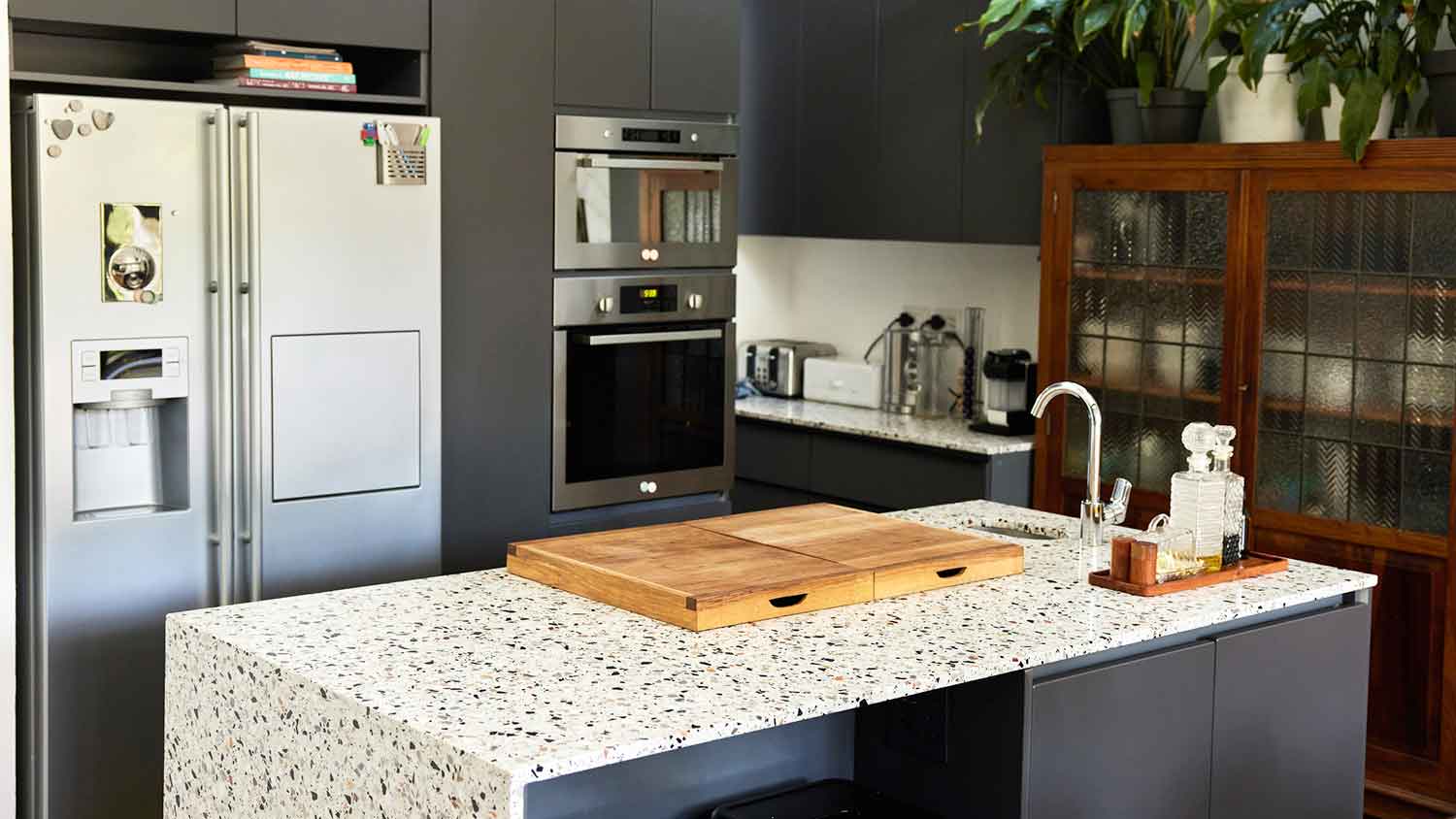
The cost of terrazzo countertops is based on several factors, including installation, materials, and size. Read on to find out what to know about pricing.
Get the right countertop measurement with this calculator


Countertops are measured by the square foot and include the overhang and backsplash.
The countertop overhang depends on the countertop location.
You can install laminate and butcher block countertops on your own
Call a professional if you want to install stone countertops.
A brand new set of countertops can give your kitchen or bathroom a whole new look. Getting accurate measurements is essential to receiving estimates for the cost of the countertop and figuring out what will work with your budget. Use this countertop square footage calculator to determine how much countertop you need for your project.
Countertops are measured by the square foot. To determine countertop square footage, multiply the length and width of each section of countertop, making sure to account for the overhang and backsplash. Because countertops sit on cabinets, start by drawing a detailed diagram of the cabinets, including the location and measurements of anything that won’t be covered, like the stove and refrigerator. Make sure to include the sink and dishwasher area in the measurements.

Apply the following formula to each section of the countertop, and then add all the sections together.
Countertop Square Footage = Length (in inches) x Width (in inches) / 144
You’ll also have to determine where the seams will go, and this will be partly dependent on the shape of the countertop and the size of the slabs.
At first glance, countertop calculations seem pretty straightforward, but there are other factors that you need to measure and then account for when you order the countertop material.
The backsplash protects the wall behind the countertop from food and grease and makes the area easier to wipe down. The standard backsplash height is between 3 and 6 inches. To account for the backsplash, add the backsplash height to the countertop depth measurement. You can use the formula below to help:
Countertop Width = Cabinet Depth + Overhang + Backsplash Height
Generally speaking, countertops come with an overhang—a certain amount of countertop that juts out from the cabinets. Accounting for this extra material will ensure you order the correct width. Use the table below to determine how much countertop overhang you should include in your measurements.
| Location | Overhang in Inches |
|---|---|
| Leading edge | 1 1/2–2 |
| Kitchen island | 12 |
| Raised bar top | 12 |
| Side edge | 1/8–1/4 |
| Against an appliance | 1/8–1/4 |
| Against a wall | None |

Installing countertops can be a DIY job, but only if you’re installing laminate or wood ones where you can cut countertops on your own. You’ll still have to have the right tools and be confident in your measurement skills, but these materials are easier to install than granite, quartz, or marble. If you’re going the stone countertop route, you can hire a countertop installation pro who will come with the right tools and experience to get the job done.
From average costs to expert advice, get all the answers you need to get your job done.

The cost of terrazzo countertops is based on several factors, including installation, materials, and size. Read on to find out what to know about pricing.

Discover the cost of installing laminate countertops, including how their size, material, and finish impact your total price.

If you’re looking to refinish your countertops, epoxy will make them shine for years to come. This guide will help you budget for epoxy countertop costs.

Is this trendy material all it’s cracked up to be? Not if it cracks from a poor installation! This guide will help you weigh concrete countertop pros and cons.

Recycled glass countertops are made from discarded glass and a durable binding agent. Learn whether recycled glass countertops are the best choice for you.

If you’re weighing Formica vs. laminate, you may be wondering if the brand name is really better. The truth is all laminates come with pros and cons.